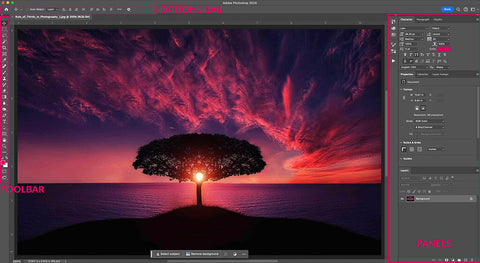-
Lightroom Presets
- Mobile Presets
-
Photoshop
-
Learn
-
Support
-
Install
- Best Sellers
- Blog
By Kelly Benton on | No Comments

For part two of this series, I continued my conversation with Karen Schultz of CKS Accounting Services and asked her all those burning photography-related accounting questions that I know you’re all curious about. Wonder no more, my friends!
If you missed the first part of my interview about hiring an accountant, you can read it right here.
The IRS says if you don’t have 100% of your prior year’s taxes paid in during the current year, you will be penalized. For example, if your tax bill in 2018 was $1,000, you need to have $1,000 paid by the end of 2019, or you will have to pay a penalty.
So if you expect to have a profit, and your income is going to be substantially more this year than the prior year, then you SHOULD BE making estimated quarterly payments as you go along. These estimated payments are due April 15, June 15, September 15, and January 15. The same goes for state taxes.
A good rule of thumb is "the more money you make, the more important it is to pay estimated quarterly tax payments".
Its generally a good idea to meet with your accountant sometime in the 2nd quarter of the year and say “Here’s where I project my income to be this year. Should I be making estimated payment? And how much should those estimated payments be?”

If you are going to write off mileage, you are supposed to keep a mileage log.
Basically, the log SHOULD include your odometer reading when you start and end your car trip, the date, where you went, and what the purpose was. If you are ever audited, the IRS will want to see that.
While keeping a mileage log WITHOUT the odometer reading is better than nothing, much of it CAN be discredited by the IRS if you get audited and you CAN'T prove where you went and why.

While it is always cleaner to pay for "business expenses" from a "business account", you can still pay for business expenses from your personal account.
One way to handle it is to just pay yourself back from the business. Basically, you would reimburse yourself from the business, and then record that expense on the business at that point.
If you don’t want to do that or don’t have the money to do that, then you should let your accountant or bookkeeper know. They will then record the expense on the business side, and show it as "owed to you", or “due to owner”. If your business is structured as a corporation, then it would be “due to shareholder”.
ALL INCOME (cash included) is considered taxable by the IRS.
That income should be reported on a 1099 form prepared by the person who hired you. That form needs to go out by January of the following year. You must then include that income on your tax return. Typically, if the total for the year is over $600, you will likely receive a 1099 form.

Many people write off what they call a “home office”. You CAN definitely do that, but you have to be able to prove to the IRS that your office space is ONLY used for business purposes.
To calculate your deduction, take the square footage of your office space and/or studio space divided by the total square footage of your home, and then use that percentage to write off a portion of your utilities, house insurance, home phone, real estate taxes, etc.
Keep in mind that a "home office" write off is one thing that the IRS really focuses on when they do an audit. They want to make sure you’re taking the right percentages and are doing it correctly. This is where having an accountant or tax preparer can be invaluable, because they will know what you can and cannot deduct, and can double check your math.
Some people take the depreciation of their home as a business expense as well. The only problem with that is when you sell your house, you will have to go back and pick up ALL of that depreciation as a gain.
Of course don't forget to write off all of the Pretty Lightroom Presets and Pretty Photoshop Actions you purchased during the year!
For more information on tax deductible expenses for photographers click here.

Many people get confused about this. The IRS says if it’s something you purchased that you CAN wear anywhere else, then you CANNOT deduct it.
Here are some examples:

If you have a pile of receipts, obviously, you can take them to your accountant and say, “here’s the stuff for my business”, and they would gladly go through it for you… but they are also going to CHARGE you for all the time it takes them.
I would recommend that you AT LEAST go through all the receipts and categorize them (office supplies, photography equipment, travel, etc.). Then add up each category, to save some time that your accountant would have charged you.
That way, if you’re a Sole Proprietorship, your accountant can just take those numbers and enter them on the tax return. You also have to let them know what your income is for the year. You can get this information from your bank statements (you should be depositing all your income into your account).
Do you have any questions or comments about our 7 Accounting Tips for Photographers? Just leave us a comment below - we would LOVE to hear from you! And PLEASE SHARE this post using the social sharing buttons (we really appreciate it)!




Kelly Benton lives with her husband and two adorable dachshunds in Northeast Indiana, where she works from home as a Wedding Photographer. When she’s not photographing over people’s love, she’s a wannabe-rockstar triathlete with a penchant for funny movies and craft beer.

Comments